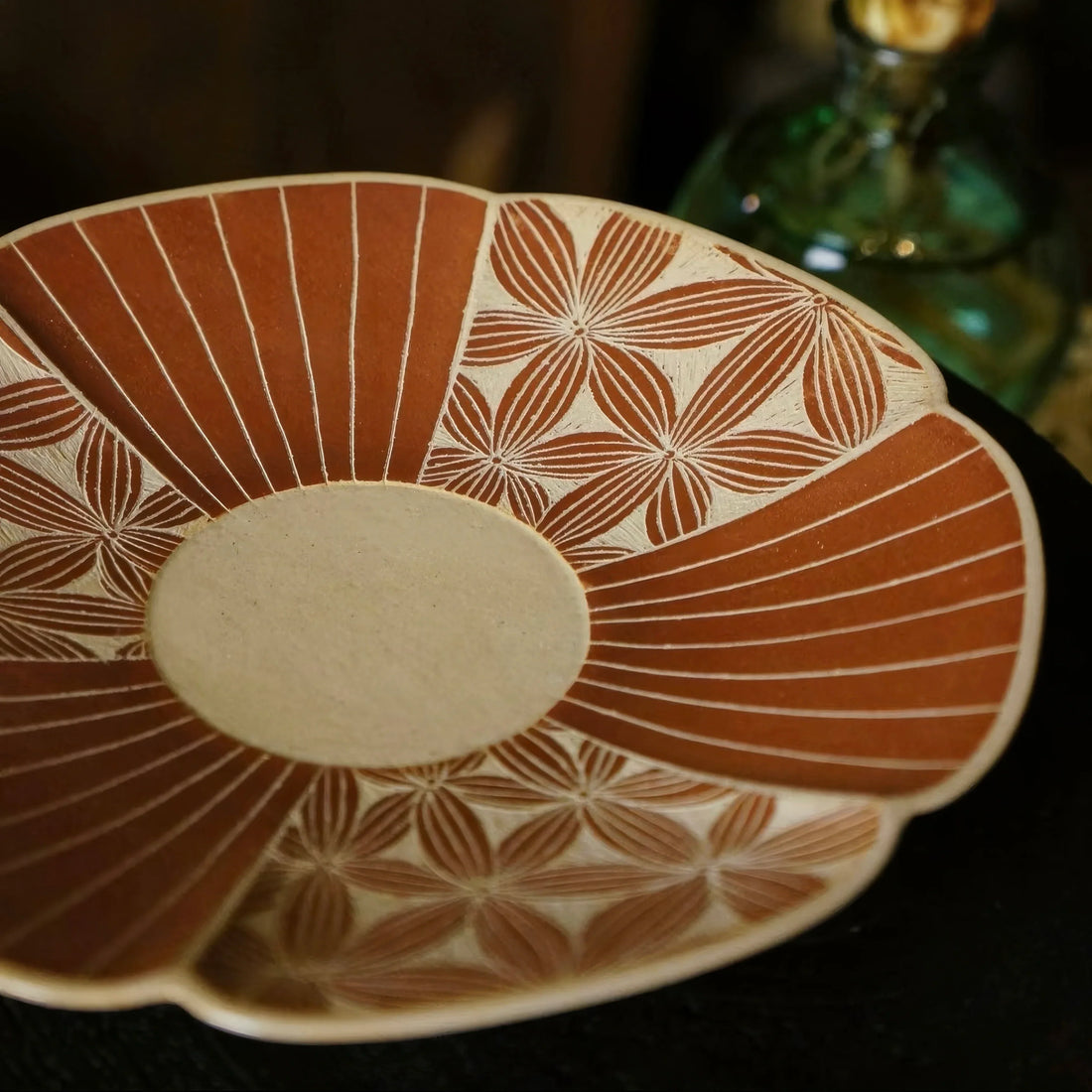
How to Care for Handmade Pottery and Earthenware
WangHaichuanShare
Tableware: More Than Just a Meal
Tableware not only plays a key role in serving meals but also adds vibrant color to dishes, much like a painter’s palette. The carefully crafted shapes by artisans bring quiet beauty to every dining moment.
If you’ve collected beautiful Japanese pottery (such as unglazed or semi-porous earthenware), did you know that these pieces need regular care? To ensure they last and continue enriching daily life, proper maintenance is essential.
Let’s take a closer look at how to care for your handmade pottery — it's time to give your tableware a well-deserved check-up.
Why Do Pottery Pieces Need Care?
Unlike dense porcelain or stoneware, handmade pottery and earthenware are more porous. These tiny surface pores allow oils, moisture, and stains to be absorbed if not properly sealed.
While this doesn't affect regular use, proper care helps protect the surface and prevent staining, discoloration, or mold over time.
Simple Steps to Care for Pottery
It’s best to care for new pottery before its first use. Here’s how:
- Line a pot with a clean white cloth. Place pottery upright and pour in stirred rice water until covered.
Note: Don’t place items upside down. Avoid mixing in non-pottery items. - Layer kitchen paper between stacked pieces to prevent damage during boiling.
- Heat on medium-low until hot (not boiling). Simmer for 20 minutes on low heat.
- Let cool naturally. Rinse and dry thoroughly, preferably upside down in a ventilated area.
Oversized Pottery Care
- Use a large container or bucket.
- Pour warm rice water over pottery until submerged.
- Let cool, rinse, and dry naturally.
Quick Prep Before Use
Soak pottery in clean water before each use. This prevents food moisture from being absorbed, reducing stains and mold.
Handling Stains or Odors
- Use diluted kitchen bleach for mold or discoloration.
- To remove odors, soak in water mixed with baking soda and vinegar (1:4 ratio).
Tip: Always dry pieces completely before storage to avoid mold and lingering smells.
Cleaning & Storing Do's and Don'ts
- No dishwashers: Hand wash with mild soap and sponge.
- Dry thoroughly: Upside down in a ventilated area.
- Avoid long soaking: Especially for porous pottery.
- Stack with care: Use cloth or paper between items.
How to Tell Which Ceramic Villa Pieces Require Special Care
At Ceramic Villa, not all pottery requires extra care. As a general rule, pieces fired at high temperatures—typically around 1300°C or higher—do not need special maintenance. These include many of our high-fired porcelain items, known for their dense, non-absorbent surfaces.
On the other hand, low-fired, semi-porous pieces with rougher textures—such as the wild-fired works by Shigeyoshi Morioka—benefit from proper care. Taking the time to seal the surface can reduce staining and help preserve the piece’s original beauty over time.
If you prefer pottery that’s worry-free and doesn’t require regular maintenance, Ceramic Villa offers a wide range of high-fired handmade pieces, including elegant porcelain from Jingdezhen. Though they may look delicate, these pieces are incredibly durable and safe for daily use.
Not sure what type suits your lifestyle best? Browse our full collection here and find the perfect match—whether you love the rustic charm of wild-fired pottery or the ease of polished porcelain.
Other Usage Tips
- Avoid sudden temperature changes.
- Don't transfer items from fridge to oven or microwave.
- Use paper towels when serving oily food to reduce stains.
Though care routines may seem tedious, they help your pottery last longer and develop beautiful character over time—just like fine leather.
Have questions? Contact us anytime via customer service — we’re happy to help.
Explore Now
